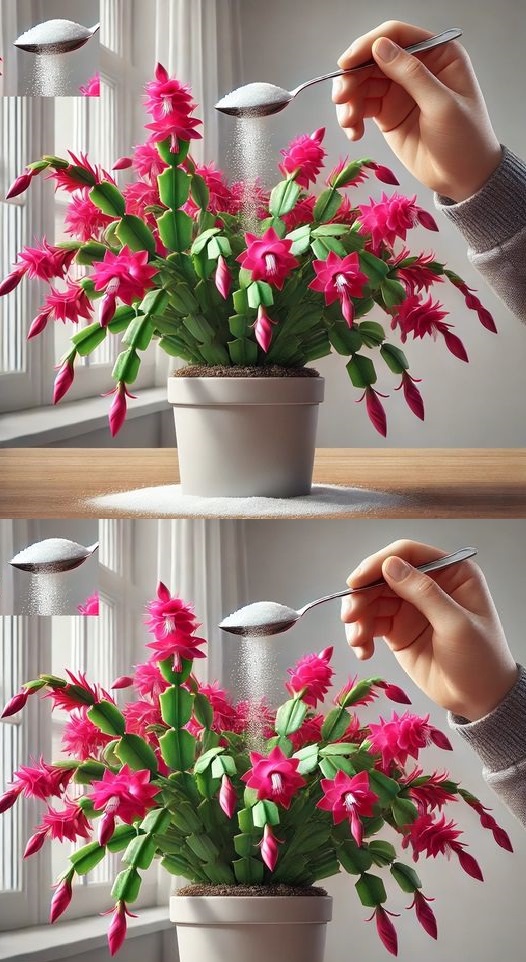ADVERTISEMENT
To encourage faster rooting, cover the pot with a clear plastic bag or place the cutting in a mini greenhouse to retain humidity. Keep the pot in bright, indirect light, and water only when the soil feels dry to the touch. After a few weeks, the cutting should root and start to grow new segments.
#### Step 4: Transplanting
Once the cutting has rooted and started to show new growth, it can be transplanted into a larger pot and treated as you would a mature Christmas cactus.
### 3. **How to Make a Christmas Cactus Bloom Year-Round**
The most exciting feature of the Christmas cactus is its spectacular blooms, which typically appear in late fall and early winter. However, with a little extra care and attention, you can encourage your Christmas cactus to bloom multiple times throughout the year.
#### 1. **Control the Light**
Christmas cacti are photoperiodic plants, meaning they require a specific amount of light and darkness to trigger blooming. To encourage flowering, you need to simulate the conditions of the plant’s native environment:
– **Nighttime Darkness**: Starting in late summer, your Christmas cactus will need about **12-14 hours of complete darkness** each night for 4-6 weeks to initiate flower buds. You can achieve this by moving it to a dark room, covering it with a box or cloth, or using a dark space for a set period each night.
– **Daytime Light**: During the day, provide the cactus with bright, indirect sunlight. This balance of light and dark signals the plant to bloom.
#### 2. **Temperature and Humidity**
In addition to light, the temperature plays a critical role in blooming:
– **Cooler temperatures** of around **50-55°F (10-13°C)** at night can help promote blooming. During the day, the temperature should remain between **60-70°F (15-21°C)**.
– Maintain a **humid environment** to help your plant thrive and encourage its flowering.
#### 3. **Watering and Fertilizing**
During the blooming period, water your Christmas cactus regularly, but don’t overdo it. The plant should stay slightly moist, but not soggy. **Avoid fertilizing** during the bloom phase, as it can interfere with flower production.
#### 4. **Encourage Reblooming**
To make your Christmas cactus bloom more than once a year, you can repeat the light manipulation after each bloom cycle:
– After the initial blooming period, reduce watering and allow the plant to rest.
– Once the blooming has stopped, cut back on water and allow the plant to “rest” for a few weeks. This period of dormancy helps the plant rejuvenate and prepares it for another blooming cycle.
#### 5. **Repotting**
If your Christmas cactus has outgrown its pot, it may need to be repotted. Do this in the spring, after the blooming period, to avoid disturbing the plant during its rest phase. Repotting will help the plant stay healthy and continue to bloom year after year.
### Conclusion
With the right care, you can grow a beautiful Christmas cactus that blooms year after year, even beyond the holiday season. By providing the right environment—appropriate light, temperature, and humidity—and utilizing propagation techniques, you can enjoy a thriving, blooming plant all year long.
Whether you’re looking to propagate new plants or encourage more blooms, your Christmas cactus will reward you with its stunning flowers for many seasons to come. Happy gardening!
ADVERTISEMENT
